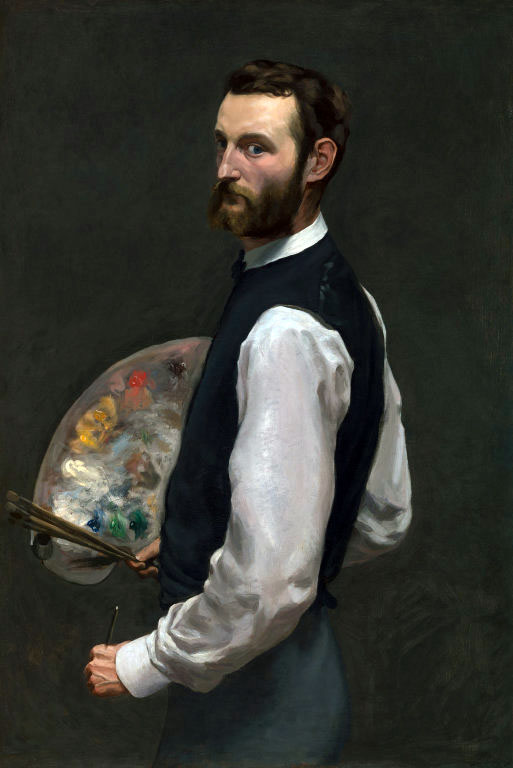Queer Places:
Cimetière Protestant, 1 Avenue de Palavas, 34070 Montpellier, France
 Jean
Frédéric Bazille (December 6, 1841 – November 28, 1870) was a
French
Impressionist painter. Many of Bazille's major works are examples of
figure painting in which he placed the subject figure within a landscape
painted
en
plein air.[1]
Jean
Frédéric Bazille (December 6, 1841 – November 28, 1870) was a
French
Impressionist painter. Many of Bazille's major works are examples of
figure painting in which he placed the subject figure within a landscape
painted
en
plein air.[1]
Frédéric Bazille never married, and his many intimate relationships with men
prompted claims that he was gay. At the time, homosexuality was considered
deviant and was almost universally repressed, particularly among the social
elite in which his family was firmly rooted.
Frédéric Bazille was born in
Montpellier,
France, into a wealthy
Protestant family. He became interested in painting after seeing some
works of
Eugène Delacroix. His family agreed to let him study painting, but only if
he also studied medicine.[1]
Bazille began studying medicine in 1859, and moved to
Paris in 1862
to continue his studies. There he met
Pierre-Auguste Renoir and
Alfred Sisley, was drawn to Impressionist painting, and began taking
classes in
Charles Gleyre's studio. After failing his medical exam in 1864, he began
painting full-time. His close friends included
Claude Monet,
Alfred Sisley, and
Édouard Manet. Bazille was generous with his wealth, and helped support
his less fortunate associates by giving them space in his studio and materials
to use.[1]
Bazille was just twenty-three years old when he painted several of his
best-known works, including
The Pink Dress (c. 1864,
Musée d'Orsay, Paris). This painting combines a portrait-like depiction of
Bazille's cousin, Thérèse des Hours, who is seen from behind—and the sunlit
landscape at which she gazes.[3]
His best-known painting is
Family Reunion of 1867–1868 (Musée d'Orsay, Paris).
Frédéric Bazille joined a
Zouave
regiment in August 1870, a month after the outbreak of the
Franco-Prussian War. On November 28 of that year, he was with his unit at
the
Battle of Beaune-la-Rolande when, his officer having been injured, he took
command and led an assault on the German position. He was hit twice in the
failed attack and died on the battlefield at the age of twenty-eight. His
father travelled to the battlefield a few days later to take his body back for
burial at Montpellier over a week later.
My published books:


BACK TO HOME PAGE

- https://en.wikipedia.org/wiki/Fr%C3%A9d%C3%A9ric_Bazille
- https://www.biography.com/people/fr%C3%A9d%C3%A9ric-bazille-17164118
 Jean
Frédéric Bazille (December 6, 1841 – November 28, 1870) was a
French
Impressionist painter. Many of Bazille's major works are examples of
figure painting in which he placed the subject figure within a landscape
painted
en
plein air.[1]
Jean
Frédéric Bazille (December 6, 1841 – November 28, 1870) was a
French
Impressionist painter. Many of Bazille's major works are examples of
figure painting in which he placed the subject figure within a landscape
painted
en
plein air.[1]

